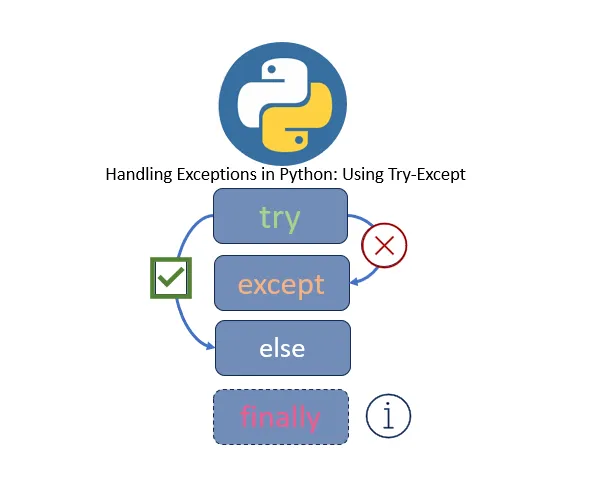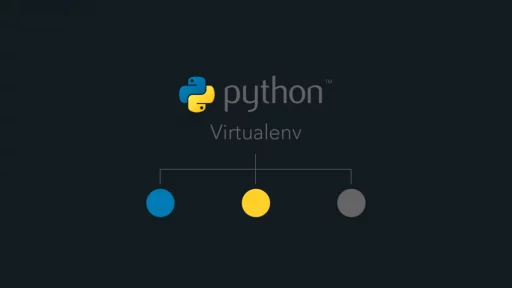When writing code, errors are inevitable and can be caused by unforeseen circumstances, user input, and unexpected behavior. This is where exception handling comes into play. In Python, the try-except block is a powerful tool that allows you to handle errors gracefully, providing a way to manage exceptions without crashing your program. Additionally, the finally clause ensures that certain actions are taken regardless of whether an error occurred. In this tutorial, we will explore how to use try-except-finally blocks to capture and handle issues effectively.

What is Exception Handling?
Exception handling is a way to manage errors that occur during the execution of a program. Instead of allowing the program to crash, you can catch these errors and take appropriate action. This ensures that your program can continue running or at least fail gracefully.
The Try-Except-Finally Block
The try-except-finally block is the foundation of exception handling in Python. Here’s a basic example:
try:
# Code that may raise an exception
risky_operation()
except Exception as e:
# Code that runs if an exception occurs
print(f"An error occurred: {e}")
finally:
# Code that runs no matter what
cleanup_operations()In this example, the code inside the try block is executed. If an exception occurs, the except block catches the exception and executes the code within it. The finally block executes regardless of whether an exception was raised or not, making it ideal for cleanup operations.
A Practical Example
Let’s consider a practical example where we attempt to read a file that may not exist:
try:
with open('nonexistent_file.txt', 'r') as file:
content = file.read()
except FileNotFoundError as e:
print(f"File not found: {e}")
except Exception as e:
print(f"An error occurred: {e}")
finally:
print("Execution complete.")In this example:
- The
tryblock attempts to open and read a file. - If the file does not exist, a
FileNotFoundErroris raised, and the correspondingexceptblock catches and handles this specific exception. - The second
exceptblock catches any other exceptions that may occur. - The
finallyblock executes after the try and except blocks, printing “Execution complete.”
Why Use Try-Except-Finally?
Using try-except-finally blocks has several benefits:
- Improved User Experience: Instead of the program crashing, you can provide a user-friendly error message.
- Debugging: Capturing exceptions can help you log errors and understand what went wrong.
- Program Continuity: Allows the program to continue running or perform cleanup operations before terminating.
- Guaranteed Cleanup: Ensures that certain operations, like closing files or releasing resources, are always performed.
Handling Multiple Exceptions
You can handle multiple exceptions by specifying multiple except blocks. Here’s an example:
try:
number = int(input("Enter a number: "))
result = 10 / number
except ValueError as e:
print(f"Invalid input: {e}")
except ZeroDivisionError as e:
print(f"Cannot divide by zero: {e}")
except Exception as e:
print(f"An error occurred: {e}")
finally:
print("Execution complete.")In this example:
- A
ValueErroris caught if the input is not a number. - A
ZeroDivisionErroris caught if the user attempts to divide by zero. - Any other exceptions are caught by the generic
exceptblock. - The
finallyblock executes after all the preceding blocks.
Another example:
import sqlite3
def write_to_database(data):
try:
# Connect to the database
connection = sqlite3.connect('example.db')
cursor = connection.cursor()
# Create a table (if not exists)
cursor.execute('''CREATE TABLE IF NOT EXISTS users (id INTEGER PRIMARY KEY, name TEXT, age INTEGER)''')
# Insert data into the table
cursor.execute('''INSERT INTO users (name, age) VALUES (?, ?)''', (data['name'], data['age']))
# Commit the changes
connection.commit()
print("Data inserted successfully.")
except sqlite3.IntegrityError as e:
print(f"Integrity error occurred: {e}")
except sqlite3.OperationalError as e:
print(f"Operational error occurred: {e}")
except Exception as e:
print(f"An unexpected error occurred: {e}")
finally:
# Ensure that the connection is closed
if connection:
connection.close()
print("Database connection closed.")
# Example data to be inserted
data = {'name': 'John Doe', 'age': 30}
# Write to the database
write_to_database(data)Explanation:
Connecting to the Database:
sqlite3.connect('example.db'): Connects to the SQLite database namedexample.db. Creates the database if it does not exist.
Creating a Table:
cursor.execute('''CREATE TABLE IF NOT EXISTS users (id INTEGER PRIMARY KEY, name TEXT, age INTEGER)'''): Ensures theuserstable is created if it does not already exist.
Inserting Data:
cursor.execute('''INSERT INTO users (name, age) VALUES (?, ?)''', (data['name'], data['age'])): Inserts data into theuserstable using the values from thedatadictionary.
Committing the Changes:
connection.commit(): Saves the changes to the database.
Exception Handling:
sqlite3.IntegrityError: Catches errors related to data integrity, such as primary key violations.sqlite3.OperationalError: Catches errors related to database operations, such as syntax errors or database locks.Exception: Catches any other unexpected errors.
Ensuring Connection Closure:
- The
finallyblock ensures that the database connection is closed, regardless of whether an exception was raised. This is crucial for freeing up resources and avoiding potential database locks or memory leaks.
The Else Clause
You can use an else clause with a try-except block to run code that should only execute if no exceptions were raised:
try:
number = int(input("Enter a number: "))
result = 10 / number
except ValueError as e:
print(f"Invalid input: {e}")
except ZeroDivisionError as e:
print(f"Cannot divide by zero: {e}")
else:
print(f"The result is {result}")
finally:
print("Execution complete.")In this example, if no exceptions are raised, the else block executes and prints the result. The finally block ensures that “Execution complete.” is printed regardless of the outcome.
The Power of Finally
The finally clause allows you to run code that should execute regardless of whether an exception was raised. This is useful for cleanup operations:
try:
file = open('example.txt', 'r')
content = file.read()
except FileNotFoundError as e:
print(f"File not found: {e}")
finally:
file.close()
print("File closed.")In this example, the finally block ensures that the file is closed, whether an exception was raised or not.
Capturing Issues in the Terminal
Using try-except-finally blocks, you can capture and display issues directly in the terminal, helping you debug your code:
try:
import non_existent_module
except ImportError as e:
print(f"Import error: {e}")
finally:
print("Module import attempt complete.")This captures the ImportError and prints an informative message to the terminal, followed by a confirmation that the import attempt is complete.
By using try-except-finally blocks, you can catch and handle errors gracefully, ensuring that your program continues to run smoothly or fails gracefully. Whether you’re dealing with file operations, user input, or external modules, try-except-finally blocks provide a flexible and powerful way to manage exceptions in Python.
Remember to handle exceptions that you expect and log or handle unexpected ones appropriately. This approach will make your code more resilient and easier to debug. The finally clause ensures that necessary cleanup actions are always performed, making your code more reliable and maintainable.
Thank you for following along with this tutorial. We hope you found it helpful and informative. If you have any questions, or if you would like to suggest new Python code examples or topics for future tutorials/articles, please feel free to join and comment. Your feedback and suggestions are always welcome!
You can find the same tutorial on Medium.com


